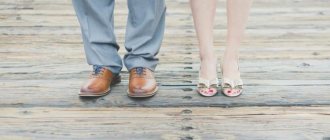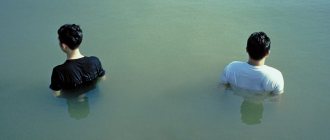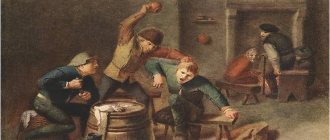Choose the right lighting
You need to start analyzing the reading environment with this.
Vision is always the first to suffer when reading in poor lighting. It is necessary to combine general and local lighting. Reading in complete darkness, even if the book is clearly visible, is not recommended. The transition of visual contact from the book to the surrounding environment should be comfortable for the eyes. The fewer changes in light intensity in a room, the better for eye health. What kind of lighting should you choose when reading before bed? There are three main lighting colors:
“warm” light - it can be compared with light on a sunny day, corresponds to 2700-3500 K (Kelvin);
neutral light - average between “warm” and “cold”, 3500-5000 K;
“cold” light - similar to lighting on a cloudy day, 5000-6500 K.
It is not recommended to use “cold” light before bedtime. It inhibits the production of melatonin. You should read only in “warm” lighting. Such light not only creates a cozy atmosphere, but also does not harm the health of the eyes or nervous system.
If the light source is within half a meter of a person, then it is recommended to use 40-60 W bulbs. If the light is located more than half a meter from the reader, then it is better to use 100 W.
The effectiveness of speed reading
Since the 1950s, speed reading has been touted as an effective way to master material quickly. Scientists, psychologists and teachers have come up with methods to improve reading speed using hand tools or eye movements.
At the World Speed Reading Championships, the best participants reach speeds of 1000–2000 words per minute. Six-time champion Ann Jones reads 4,200 words in 60 seconds. These results seem phenomenal compared to the average ability of an adult who advances through text at 300 words per minute.
Popular methods for speed reading:
- Skimming is quickly skimming the text with your eyes to isolate the main points. You don't read every word carefully, but quickly scan the first and last paragraphs, headings, and highlighted passages to find key ideas. Scanning, a similar method, involves skimming text to find specific words and phrases.
- Meta-guiding uses a pointer—either a finger or a pen—to guide the eye along the lines. This helps your eyes move horizontally, focusing on the word you are reading.
- The visual span method uses the visual span to read words in blocks. A person focuses on one central word, and uses peripheral vision to see neighboring ones. It is believed that it helps to read five words at a time.
- Rapid Sequential Visual Presentation (RSVP) is a state-of-the-art method. He uses a reading program that shows words one at a time. You can choose the speed at which they will be displayed on the screen.
Although many readers adhere to these methods, their effectiveness is controversial. When skimming, details are lost. On the other hand, skimming and scanning help you quickly learn a topic, and you can then read the relevant sections in more detail.
The author of the book “Psychology of Reading,” Keith Rayner, rejects speed reading methods. He explains that we are limited by the anatomy of the eyes and the brain's ability to process information. To save time, some methods are based on subvocalization - stopping the mental voicing of words. Reiner claims that when you speed read, the level of memorization and comprehension of what you read decreases significantly.
World Championship participants demonstrate a reading comprehension level of about 50%. For Ann Jones, the figure is 67%.
Regardless of the speed reading method used, comprehension is always sacrificed for speed.
This isn't always a bad thing, depending on what you're reading. If you are looking through dry documentation to understand the key points, it makes sense to use skimming. The RSVP method works when you are introduced to a short, easy-to-understand section of the book. The author prefers to read with a pen, using it as a guide for the eyes.
But it makes no sense to use speed reading methods if you have complex material in front of you or a book that you want to reflect on and savor every chapter.
Install the light on the right side
Near-ideal conditions in terms of temperature range and light source location.
Too “cold” light, located vertically.
It is important to know that the light should always be located at the top and side. Then the pages of the book will be well lit. If a person is right-handed, then place the light on the left. If you are left-handed, then you need to sit so that the light source is on the right. The light should not shine directly into the eyes.
Read in the correct posture
And now more about the position in which reading will be safe for health. Many people like to read before going to bed, lying right on the bed. But it's not right. When a person lies on his back, his gaze is directed upward. This increases the load on the eye muscle, which leads to worsening vision. It’s also difficult to maintain the required distance from the eyes to the book in this position. It is unlikely that anyone will be able to hold a book on outstretched arms for long. Yes, and it’s not very convenient. And, of course, the spine suffers.
Switch to e-books
No matter what anyone says, the paper book is gradually dying out, turning into something like a vinyl record - a pleasure for fans. Reading in a reader is easier, simpler and much cheaper. For a reading enthusiast, the reader pays for itself in about two months. It’s hard to calculate how many trees you’ll save.
These are my simple rules and laws. Once you start reading, it is impossible to stop. I'll tell you this for sure. And one more thing: as the unknown designer Artemy Lebedev once said, every successful person is, first of all, the books he read on time.
Recommended by topic
“Sleep debt” – what does this strange concept mean and how to avoid the consequences Let’s figure out how harmful it is to regularly sleep on your stomach
The neck is tense, tilted forward, bent in the maximum position - if you regularly read in this position, this is harmful to your health.
It’s good if the room has a designated reading area. But if there is no such place, then it is recommended to read while sitting upright on a comfortable chair or sofa, leaning your back. If you sit at a table, you need to use a comfortable chair that is not hard or has a curved back. It is not recommended to sit with your legs tucked under you or twisted in an unnatural position.
If a person reads while lying on the bed, then there is no need to lie down on a flat surface. Many beds have high headboards. You can place several pillows under your back to achieve a semi-sitting position.
5. Choose a paper version of a book, not a tablet or phone
A paper version of a book is the best solution for preserving human vision. Printed letters are perceived by the eyes much better than modern gadgets. A phone or tablet is not intended for reading. And you especially shouldn't use them before bed. A bright light source from the phone excites the nervous system and impairs vision.
Recommended by topic
How many hours before bedtime can you exercise and how?
Most importantly, you need to use books for reading that use modern e-link light reflection technology. The eyes perceive light that does not dazzle or harm vision. A bright glow from a computer or phone penetrates directly into the eyes.
Backlight, resolution, contrast and font - each must be adjusted individually for his vision. It is strictly forbidden to read an e-book in the dark. You also need to take a break from reading for 20-30 seconds every 10-15 minutes. The distance to the eyes should also be 35-40 cm.
4/ Slow down
Graduates of philological faculties often complain that even after university, when reading for pleasure, they do it too quickly. Those who have been unable to master Thomas Mann’s “The Magic Mountain” for six months now may be perplexed by these words. The faster you read, the more you will have time to read and find out, is that bad?
The catch is that the habit of immersing yourself in a book and reading all night long does not develop the cognitive abilities of the brain. Rather, on the contrary, it dulls them. Over three hours of continuous reading, concentration inevitably falls, and the information structured in the text turns into a tangle of confused facts. The brain requires stops to analyze and critically evaluate new information.
Reading a book for 20 minutes a day is much more effective than trying to “devour” a novel over the weekend.
Do not underestimate the external factors that influence the assimilation of the text. If a book accompanies you for a long time, the story told in it inevitably acquires associations. The plot is associated with the memories of the place where you read, with the sensations that you experienced at that moment, with accompanying visual images and events. For example, you read one chapter while sitting on the veranda of a cafe, and another on the last day of your vacation.
So, from a memory standpoint, reading a book 20 minutes a day for a couple of weeks is much more effective than trying to devour a novel over a weekend. It is not for nothing that Vladimir Nabokov wrote that “literature should not be swallowed in one gulp, as a drug that is good for the heart or mind, this “stomach” of the soul. Literature should be taken in small doses, crushed, crushed, ground.”
Choose the right book genre
An important aspect for proper reading before bed is the choice of book. Before a night's rest, you need to get into a calm mood. Therefore, books from the thriller, detective, and horror genres are not suitable for reading. All these genres excite the imagination, excite the nervous system, and cause insomnia. It is also not recommended to read scientific and philosophical literature, as brain activity will be stimulated by the arrival of new information.
Fiction is suitable for quiet reading before bed. Psychologists advise reading something kind, calm, pleasant, and romantic. All this relaxes a person, relieves tension, and prepares the brain for sleep.
How to Find Time to Read 100 Books a Year
Time Management Neil Pasrich May 13, 2021
Photo: CINTASCOTCH/GETTY IMAGES
We need to read more books. Most people respond to this with “Oh yeah! Of course yes!". And two seconds later they add: “If only I had time...”
Of course, these are excuses: in reality, we all have time to read. Research from the University of California shows that today we consume more information than ever before (more than 100 thousand words per day). Just think how many texts, alerts, notifications, work and personal emails, news headlines, advertisements, blogs, tweets, Instagram comments and... much, much more you read every day!
Who will have time for books after all this - sometimes meaningless - information?
In another HBR article, Eight Proven Ways to Read More Books, I talked about how I spent most of my adult life reading, at best, five books a year. In addition to several books gathering dust on the nightstand to read before bed, if I was lucky, I managed to get through two or three more while on vacation. But suddenly three years ago I read fifty books in a year. Fifty! In one year! I could not believe it. Suddenly I felt that books were helping me grow as a husband, a father, and even a writer. Since then I have tried to double the result. Now I read more than 100 books a year. Of course, sometimes I also have periods of “booklessness”. Sometimes I read, but very slowly, and sometimes I fall into the traps set by social networks. But I have eight ways that help me stay on track and read a lot.
1. Surround yourself with books. Most people have a bookshelf “out there somewhere.” One day my wife simply laid out a dozen picture books on the coffee table. What happened? Our children immediately began leafing through them. Now we just swap the books and leave them on the table. Google uses a similar “path of least resistance” principle: healthy snacks for employees are placed in visible places, and chocolate is hidden in nondescript containers. Guided by this principle, we moved the TV to the basement and placed a bookshelf near the front door. Books appeared in the car and in the most unexpected corners of our home. The Argentine writer Jorge Luis Borges once said: “I cannot sleep unless I am surrounded by books.” This perfectly describes our new way of life. (Even if you're trying to clear out your house of clutter or if you don't have enough space to store books, you can always take a walk to your local library).
2. More red in bed. As soon as my wife falls asleep, I turn on a reading flashlight with a red filter. Why red? Michael Breus, author of Always On Time, believes that red light promotes the production of melatonin. But ordinary bright lighting, according to the findings of the Healthy Sleep Foundation of Australia, has the opposite effect. Too much light or screens can deprive you of sleep. Reading, on the contrary, calms, not invigorates.
3. Learn to resist the temptation to pick up a smartphone. A smartphone is a device to distract your attention. It is created to be perfect, attractive and eye-catching. Don't believe me? Stern School of Business professor Adam Alter's book, Irresistible, will help you learn more about the addictive mechanisms at work in smartphones. They can be compared to slot machines, but they also fit in your pocket.
How to deal with the obsessive desire to pick up a smartphone? Make it as unattractive as possible. Clear the home screen of applications: it should be blank when unlocked. Is your screen cracked? So what? Don't change it. Place it on charge in another room so that it is further away from you in the evening or morning, when the temptation to use gadgets increases. If you leave your smartphone at the head of your bed at night, turn on do not disturb mode and all calls and text messages will be automatically blocked. Very slowly, step by step and day by day, you will learn to resist the urge to constantly pick up your smartphone.
4. Use Dewey Decimal Classification. How do you arrange your books? By color? By date of purchase? Or are there stacks of books standing anywhere? Dewey Decimal Classification is used in all libraries for a reason. It is very logical: books are carefully divided into specific thematic categories in the sections of psychology, religion, science, art... in general, in all possible areas. What is the convenience of such a system? You begin to see logical connections between books, as well as topics where you have gaps. Even though I spent an entire weekend reorganizing my library according to this classification, not only did I satisfy the burning need to organize everything, but I also find books much faster. Now I’m more deliberate in choosing what to read next time, and I delve deeper into the texts: they seem to be etched into my memory. What is needed for this? I only needed two tools. Firstly, classify.oclc.org to find the DDC code of books that do not have it, and secondly, the Decimator application to decipher the code. And a pencil: I write the Dewey code and category on the inside cover of books before I put them on the shelf.
5. Use podcasts and BookTube to avoid the dilemma of choosing your next book to read. Once your reading speed increases, the main problem will be answering the question “What else should I read?” Once you've read all the books at the top of the bestseller lists, or abandoned the first books you see in airport stores, you'll have to get used to using catalogs and searching in bookstores to find something really worthwhile. In an age of unlimited choice, the value of a good selection of books skyrockets. The ideal source for such collections is podcasts and booktber channels (YouTube bloggers who make videos about books). But which ones to start with? Let me give you a few examples. Variety of podcasts from blogger Modern Mrs. Darcy What Should I Read Next? will immediately solve the problem of choice, and Amanda Nelson with BookRiot even offers a service for individual selection of reading recommendations, Get Booked. I also have my own podcast, 3 Books, where guests like TED curator Chris Anderson, author Judy Bloom, and businessman Chip Wilson share the three books that have most influenced their lives. And finally, be sure to use BookTube. Here is a great selection of channels, of which I would primarily recommend Ariel Bissett and polandbananasBOOKS.
6. Unsubscribe from all news. I was proud of myself when I canceled my subscriptions to five magazines and two newspapers in order to focus entirely on books. But online news haunted me. Here you need to act especially harshly. Unsubscribe from all news feeds on social networks. Delete all news site bookmarks on your computer. Oh yes, and passwords for them too. Remember the words of political scientist Herbert Simon: “Information also “consumes”—obviously, it absorbs the attention of its recipients. Consequently, an overabundance of information not only impairs concentration, but also leads to the need to effectively distribute attention between the many sources of information that absorb it.” Want to go deeper into the topic? I recommend reading the articles “Why you need to stop reading the news” and “Five things you will notice as soon as you stop following the news.”
7. Read on gadgets designed exclusively for reading. “People rarely read books in iBooks; just one click and you're checking your email,” Seth Godin explained to me in an interview. If we want to get distracted or stop reading, just one notification on our smartphone can do it. We are willingly distracted by it and other messages or reminders. This way you won’t be able to immerse yourself in the world of a book. So what am I suggesting? Real books. Real pages. On real paper. Yes, I can put up with cutting down trees if it helps me plunge into my own inner world. After all, only real books allow you to have sole control over the reading process. The narrator's voice does not interrupt your inner voice, the format and method of displaying the text do not affect the writer's artistic intent. Of course, some may need a larger font, while others prefer the audiobook format during long trips. However, if you want to become a real book snob, like me, feel free to pick up paper books. Do you prefer a reader? Just make sure it doesn't have internet connectivity.
8. Talk to local bookstore employees. For me, the best bookseller of all time is Sarah Ramsey of Another Story Books in Toronto. When I walk into a store, I immediately start chatting with her, sharing my thoughts, complaining about the daily difficulties that I have to struggle with. While we wander between the bookshelves, she listens to my stories, assesses my life situation - and immediately suggests a suitable book. I leave the store with a stack of books that fully correspond to my emotional state and will help me develop in the right direction (or whose topics are close to me on a deeper level). If you (as I do) believe that advice from someone in the know is better than any search algorithm, go to your local non-chain bookstore, see if someone in the store has the same preferences as you, and then ask them to find something just for you. . This makes it much easier to find books you can't put down.
So, are you ready to read? Can't wait to get started? Or are you the type of person who needs scientifically proven facts to change your behavior? Well, here are some facts for you. In 2011, the Annual Review of Psychology published an article showing that reading activates mirror neurons and parts of the brain responsible for developing empathy and understanding. Reading helps you improve as a leader, mentor, parent, sibling. Another study published in the journal Science proves that reading fiction helps not only develop empathy, but also improve the ability to interact in society. Finally, in a surprising 2013 experiment at Emory University, MRI scans of subjects' brains taken the morning after they were required to read passages from novels showed improved neural connections in the left temporal lobe, an area of the brain responsible for language perception. Just imagine how much benefit a few pages a day can bring in the long run.
Almost everyone wants to read more books, and this is quite possible. You are what you eat and you are what you read. Keep turning the pages. Continue reading.
About the author. Neil Pasrich is the author of six bestselling books, including The Formula for Happiness. For ten years, Pasrich was responsible for developing executives at Walmart and currently hosts the 3 books podcast.
Keep reading routine
This question also worries many. After all, it happens that a book is so fascinating that it is impossible to stop reading. But before going to bed, you shouldn’t overuse reading, otherwise it may turn out that you won’t be able to fall asleep for a long time. Or you might even end up with insomnia. Therefore, before a night's rest, it is recommended to read no more than 30-60 minutes.











